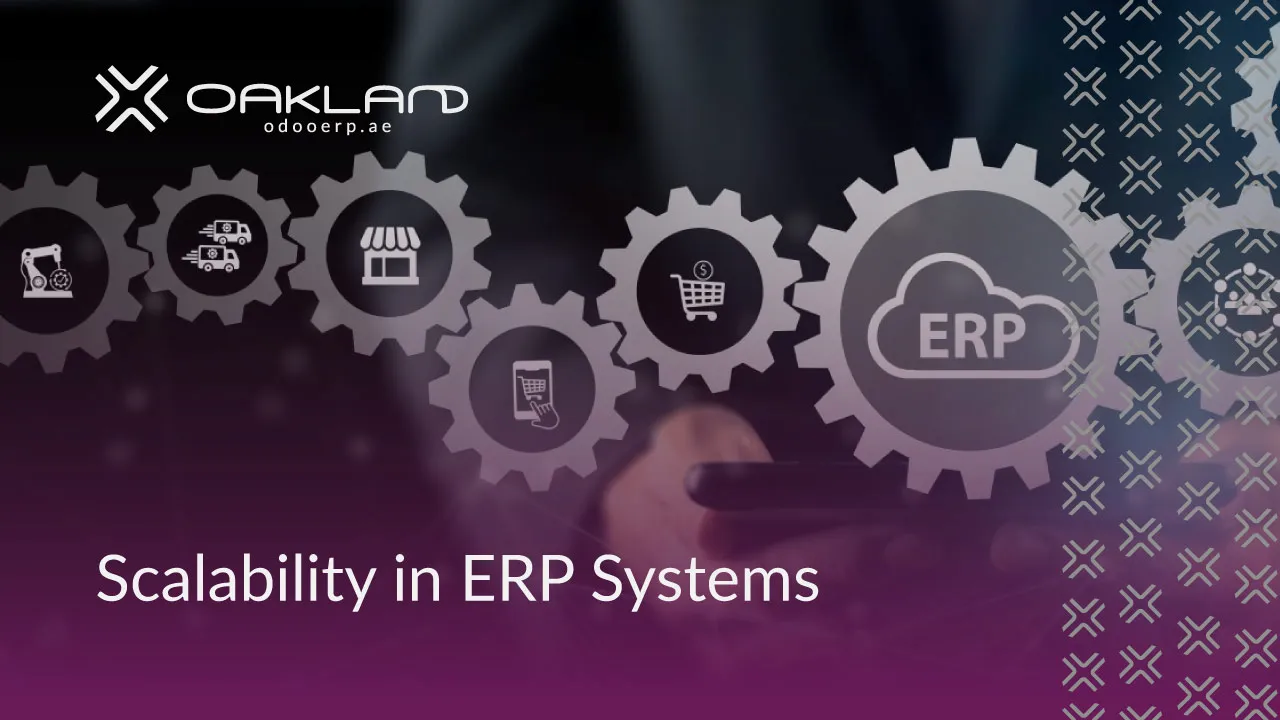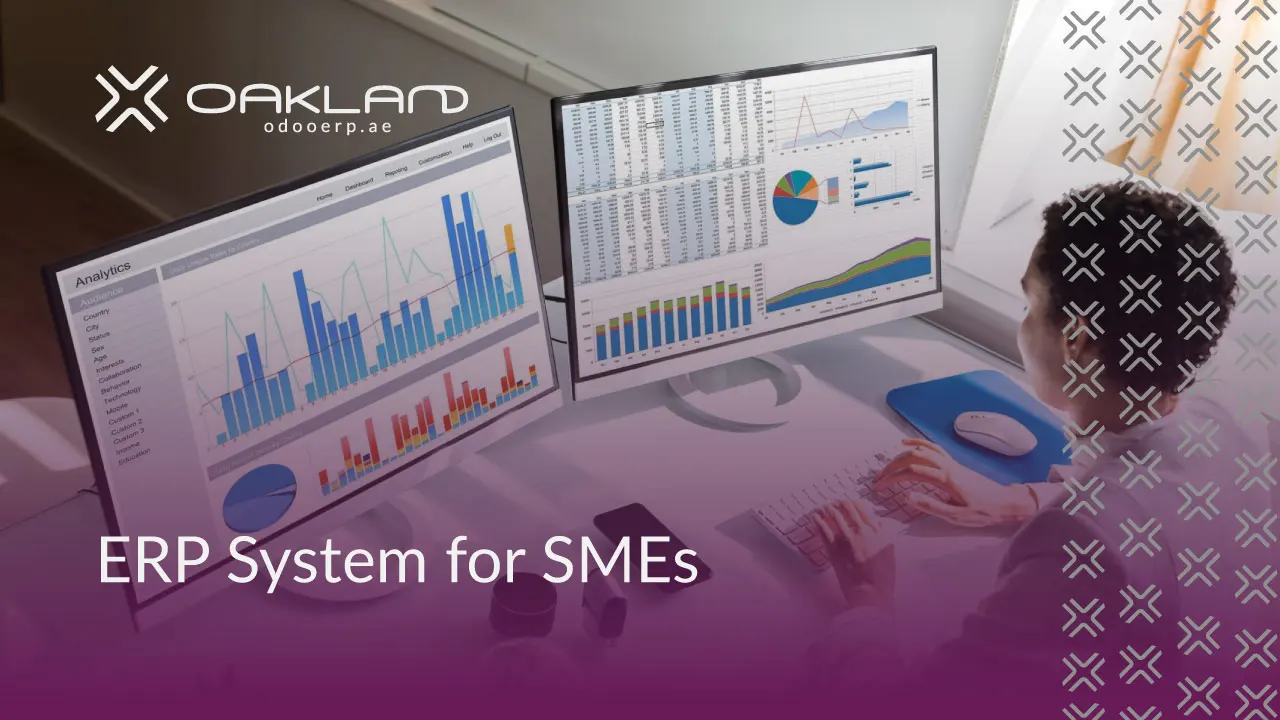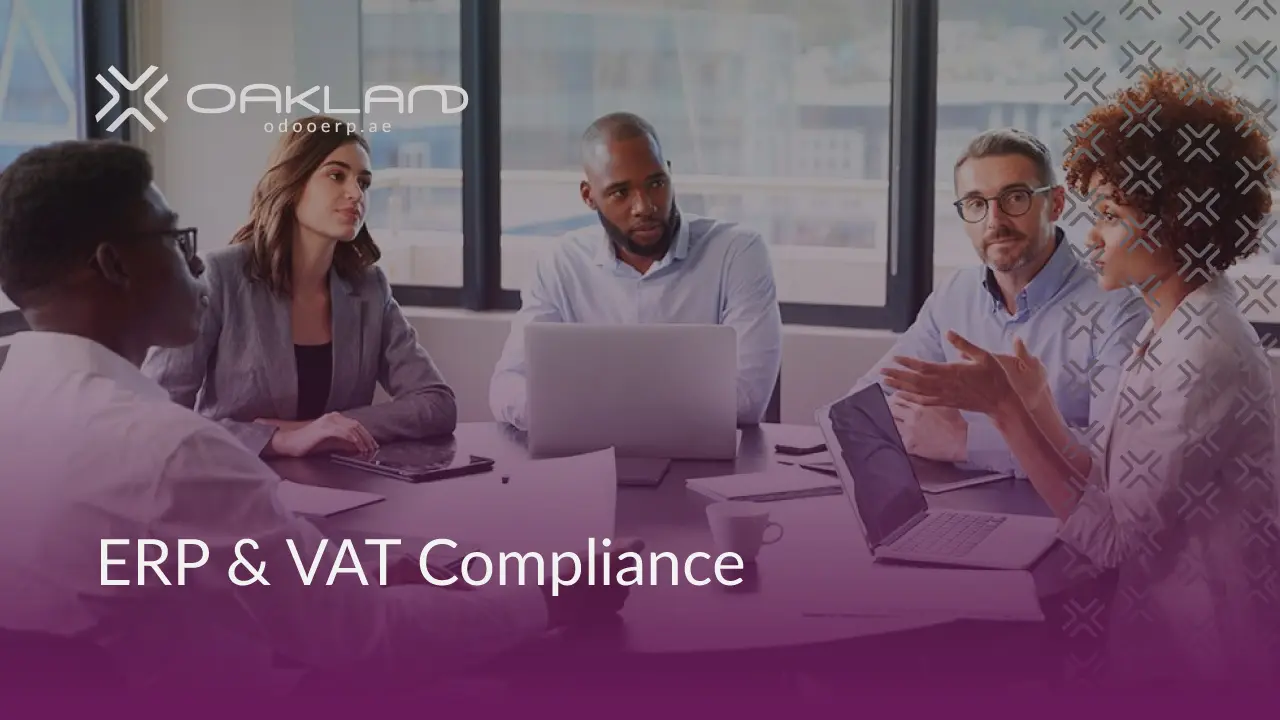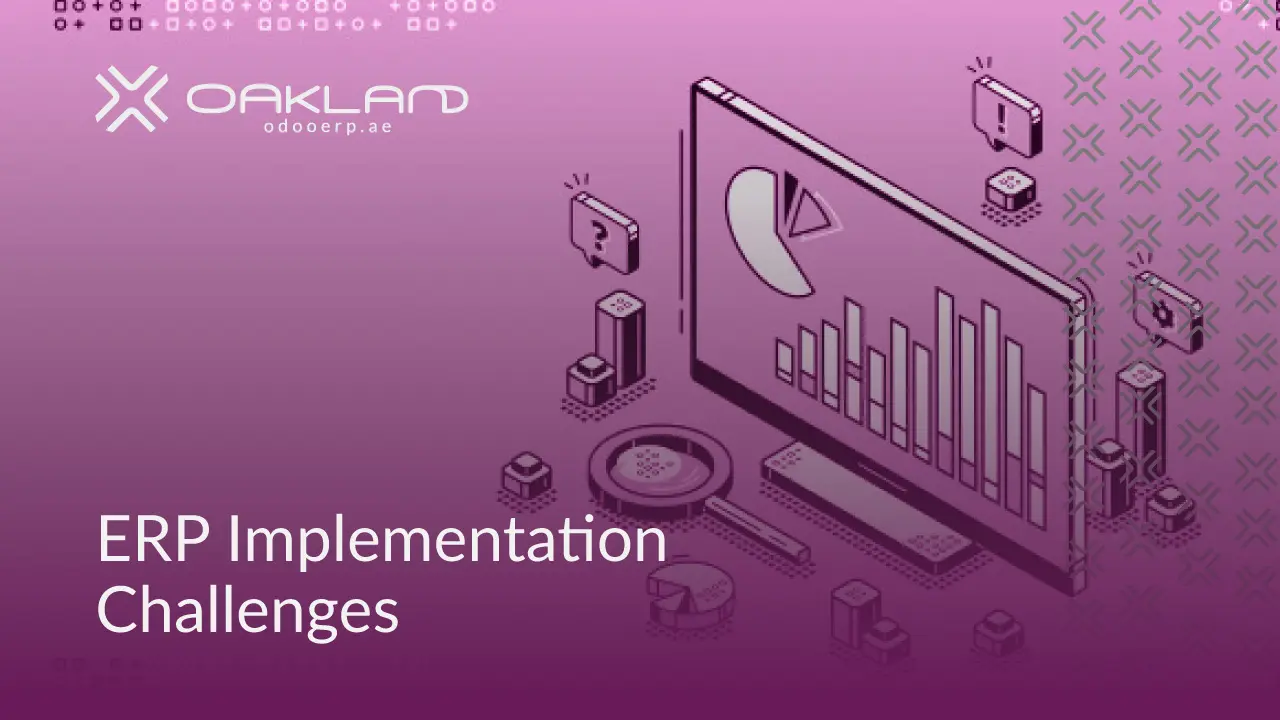Understanding these ERP implementation challenges is essential to ensure a successful outcome. In this blog post, we’ll explore the 6 most common ERP implementation challenges in the UAE and provide valuable insights to help you navigate ERP implementation process effectively.
Regulatory Compliance
Understanding Local Regulations
VAT and Tax Compliance
In the UAE, VAT compliance is crucial for businesses. The ERP system must be equipped to handle the UAE’s VAT laws, which mandate a 5% tax on goods and services. Ensuring the ERP system can accurately calculate VAT, generate compliant invoices, and submit timely VAT returns is essential for legal compliance. Additionally, businesses must be aware of other tax regulations, such as corporate tax and customs duties, and ensure the ERP system can manage these as well.
Industry-Specific Regulations
Different industries in the UAE have specific regulatory requirements that must be adhered to. For instance, the healthcare sector must comply with stringent data protection and patient confidentiality laws, while the financial sector must adhere to robust anti-money laundering (AML) regulations. An ERP system must be customizable to meet these specific industry regulations, ensuring all legal requirements are met without compromising operational efficiency.
Data Privacy Laws
The UAE has strict data privacy laws, such as the Federal Law No. 2 of 2019 on the Use of Information and Communication Technology in Health Fields. ERP systems must ensure that data is stored securely and that access is restricted according to privacy regulations. Compliance with the General Data Protection Regulation (GDPR) is also a consideration for businesses operating internationally, making it essential for ERP systems to provide robust data protection features.
Regular Updates
System Upgrades
ERP systems must be regularly updated to keep pace with changing regulations. This includes software updates that reflect new tax rates, reporting standards, and compliance requirements. Regular updates ensure the system remains compliant with the latest laws, reducing the risk of legal issues and penalties.
Training
Continuous training for employees on new regulatory requirements is essential. ERP systems should facilitate easy access to training materials and updates. Training programs can include webinars, online courses, and in-system tutorials that help employees stay informed about the latest compliance practices.
Automated Compliance
One of the significant advantages of an ERP system is its ability to automate compliance processes. Automated compliance features can include real-time monitoring of transactions to ensure they adhere to regulatory standards, automatic generation of compliance reports, and alerts for any discrepancies. These features help businesses maintain continuous compliance with minimal manual intervention.
Regulatory Audits
Preparation
Preparing for regulatory audits is a critical aspect of maintaining compliance. ERP systems should be capable of generating detailed reports that auditors may require. This includes financial statements, transaction logs, VAT returns, and any other documentation necessary to demonstrate compliance with regulations.
Documentation
Maintaining comprehensive documentation within the ERP system is vital. This includes keeping records of all transactions, invoices, and compliance reports. Proper documentation ensures that businesses can provide evidence of compliance during audits, which can help avoid penalties and legal issues.
Continuous Monitoring
Regular monitoring of compliance through the ERP system is essential to prevent regulatory breaches. This involves setting up automated checks and balances within the system to ensure all transactions are compliant. Continuous monitoring helps in identifying and resolving compliance issues promptly, maintaining the integrity of business operations.
Cultural and Organizational Resistance
Change Management
Employee Buy-In
Gaining employee support is one of the most crucial challenges in ERP implementation. . Resistance to change can stem from fear of the unknown, concerns about job security, or simply discomfort with new technology. To address this:
- Involve Employees Early: Engage employees in the ERP selection and implementation process. Their input can help tailor the system to meet their needs and increase their sense of ownership.
- Communicate Benefits: Clearly articulate the benefits of the ERP system, such as improved efficiency, reduced manual tasks, and better decision-making capabilities. Highlighting how the system will make their jobs easier can reduce resistance.
- Create Champions: Identify and train a group of employees who can act as ERP champions. These individuals can help advocate for the system, provide peer support, and address concerns among their colleagues.
Communication
Effective communication is essential to manage change and minimize resistance. A well-thought-out communication plan can help:
- Transparency: Maintain transparency about the ERP implementation process, timeline, and any potential challenges. Regular updates can keep everyone informed and reduce uncertainty.
- Feedback Mechanisms: Establish channels for employees to voice their concerns, ask questions, and provide feedback. This can help identify potential issues early and address them proactively.
- Consistent Messaging: Ensure consistent messaging from leadership about the importance and benefits of the ERP system. Aligning messages across all levels of the organization helps reinforce the change.
Leadership Support
Strong leadership is vital to drive the change process and ensure its success. Leaders can:
- Model Behavior: Demonstrate a commitment to the new ERP system by using it themselves and encouraging its use among their teams.
- Provide Resources: Allocate sufficient resources, including time, budget, and personnel, to support the ERP implementation.
- Address Resistance: Actively address resistance by listening to concerns, providing reassurance, and taking corrective actions as needed.
Training and Education
Comprehensive Training Programs
Implementing a new ERP system requires comprehensive training to ensure all users are comfortable with the new processes and functionalities. Effective training programs should:
- Cover All Aspects: Include modules on system navigation, data entry, reporting, and any specific functions relevant to different user roles.
- Hands-On Practice: Provide opportunities for hands-on practice to help users become familiar with the system in a controlled environment.
- Progressive Learning: Offer training in stages, starting with basic functionalities and gradually introducing more complex features.
Role-Based Training
Tailoring training to the specific needs of different user groups can enhance its effectiveness. Consider:
- Customized Content: Develop training content that addresses the unique requirements of various roles, such as finance, HR, sales, and operations.
- Relevant Scenarios: Use real-life scenarios relevant to each role to make the training more practical and engaging.
- Expert Trainers: Engage trainers with expertise in both the ERP system and the specific business functions to provide relevant and in-depth training.
Ongoing Support
Continuous support post-implementation is critical to ensure users can effectively use the ERP system. This can include:
- Helpdesk Services: Set up a dedicated helpdesk to provide immediate assistance and resolve any issues users encounter.
- Refresher Courses: Offer periodic refresher courses to reinforce learning and introduce any new features or updates.
- User Communities: Foster user communities where employees can share tips, best practices, and solutions to common problems.
Cultural Adaptation
Localization
Adapting the ERP system to align with the local culture and business practices in the UAE is essential. This involves:
- Language Support: Ensure the ERP system supports Arabic and other relevant languages used in the organization.
- Cultural Sensitivity: Customize the system interfaces and processes to reflect local cultural norms and business etiquettes.
Employee Involvement
Involving employees in the customization process can help ensure the ERP system meets their needs and preferences. This can include:
- User Feedback: Collect feedback from employees during the customization phase to identify any cultural or operational adjustments needed.
- Pilot Groups: Use pilot groups to test the customized system and gather insights on its cultural fit and usability.
Feedback Mechanisms
Establishing effective feedback mechanisms can help continuously improve the ERP system’s alignment with the organizational culture. This involves:
- Regular Surveys: Conduct regular surveys to gather employee feedback on their experience with the ERP system.
- Suggestion Box: Create a suggestion box for employees to submit ideas for improvements or report any cultural mismatches.
- Focus Groups: Organize focus groups to discuss specific cultural and operational challenges and brainstorm solutions.
Data Migration and Integrity
Data Cleanup
Data Quality
Ensuring data quality is a critical step before migrating to a new ERP system. This involves:
- Data Accuracy: Verifying that all data is correct and up-to-date. This includes correcting any errors in customer information, financial records, and inventory details.
- Completeness: Ensuring that all necessary data fields are populated. Incomplete records can lead to issues in the new system.
- Consistency: Standardizing data formats and entries to maintain consistency across all records. This includes uniform date formats, consistent naming conventions, and standardized codes.
Standardization
Standardizing data ensures that it aligns with the new ERP system’s requirements. Key steps include:
- Format Alignment: Adjusting data formats to match the specifications of the new ERP system.
- Normalization: Normalizing data to eliminate redundancies and ensure logical grouping of information.
- Validation Rules: Implementing validation rules to enforce data integrity, such as checking for duplicate entries and ensuring mandatory fields are filled.
Validation
Validating data is essential to confirm its accuracy and readiness for migration. This process involves:
- Cross-Checking: Cross-referencing data with existing records to ensure accuracy.
- Sample Testing: Performing sample tests on subsets of data to identify potential issues.
- Error Rectification: Addressing any errors or inconsistencies found during the validation process.
Migration Process
Planning
A well-structured migration plan is crucial for a smooth transition. Important elements include:
- Detailed Roadmap: Creating a comprehensive roadmap outlining all steps and timelines for the migration.
- Resource Allocation: Assigning necessary resources, including personnel, tools, and budget, to support the migration.
- Risk Management: Identifying potential risks and developing mitigation strategies to address them.
Pilot Testing
Pilot testing helps identify and resolve issues before full-scale migration. Key aspects include:
- Test Environment: Setting up a test environment that mirrors the production system.
- Sample Data Migration: Migrating a subset of data to test the process and identify any problems.
- Feedback Loop: Gathering feedback from pilot users to refine the migration process.
Execution
Executing the migration requires careful management to minimize disruption. Steps include:
- Phase-Wise Migration: Migrating data in phases to manage workload and reduce risk.
- Real-Time Monitoring: Continuously monitoring the migration process to detect and address issues promptly.
- Communication: Keeping all stakeholders informed about the migration status and any potential impacts on operations.
Post-Migration Validation
Data Verification
Post-migration verification ensures that all data has been accurately transferred. This involves:
- Comparison: Comparing migrated data with original records to check for discrepancies.
- Reconciliation: Reconciling financial and inventory records to ensure completeness and accuracy.
- Correction: Addressing any errors or data loss identified during verification.
Testing
Extensive testing post-migration helps confirm system functionality and data integrity. Key testing phases include:
- Unit Testing: Testing individual modules to ensure they work correctly with the new data.
- System Testing: Verifying that the entire ERP system operates smoothly with the migrated data.
- User Acceptance Testing (UAT): Involving end-users in testing to ensure the system meets their needs and functions as expected.
Adjustments
Based on testing results and user feedback, necessary adjustments should be made. This includes:
- Data Corrections: Making corrections to any data issues identified during testing.
- System Tuning: Fine-tuning system configurations to optimize performance.
- User Training: Providing additional training to address any gaps in user understanding and ensure effective system use.
Integration with Existing Systems
Compatibility
System Compatibility
Ensuring compatibility between the new ERP system and existing software and hardware is crucial for a smooth integration. Key considerations include:
- Software Interfaces: Verifying that the ERP system can interface with current software applications such as CRM, accounting, and inventory management systems.
- Hardware Requirements: Checking that the existing hardware infrastructure can support the new ERP system’s requirements without significant upgrades.
- Operating Systems: Ensuring the ERP system is compatible with the organization’s operating systems, whether they are Windows, Linux, or macOS.
API Integration
Using APIs (Application Programming Interfaces) facilitates seamless communication between the ERP system and other software applications. Important aspects include:
- API Availability: Ensuring the ERP system provides robust APIs for integration with other applications.
- Data Exchange: Establishing reliable data exchange protocols to ensure consistent and accurate data flow between systems.
- Custom Development: If necessary, developing custom APIs to bridge compatibility gaps and meet specific integration needs.
Third-Party Tools
Leveraging third-party integration tools can simplify the integration process. Key benefits include:
- Pre-Built Connectors: Using pre-built connectors that facilitate quick and easy integration with popular software applications.
- Data Mapping: Employing tools that offer data mapping capabilities to align data structures between systems.
- Integration Platforms: Utilizing integration platforms as a service (iPaaS) to manage and streamline the integration process.
Data Synchronization
Real-Time Sync
Implementing real-time data synchronization ensures that all systems are updated simultaneously. Key elements include:
- Synchronization Protocols: Establishing protocols for real-time data exchange to maintain data accuracy across all systems.
- Conflict Resolution: Setting up mechanisms to handle data conflicts and ensure data consistency.
- Performance Monitoring: Continuously monitoring synchronization processes to detect and resolve any performance issues.
Batch Processing
For non-critical data updates, batch processing can be used to reduce system load. Key steps include:
- Scheduling: Scheduling batch processes during off-peak hours to minimize impact on system performance.
- Data Validation: Implementing validation checks to ensure data integrity before and after batch processing.
- Error Handling: Setting up robust error handling procedures to manage any issues that arise during batch processing.
Conflict Resolution
Establishing protocols for resolving data conflicts ensures data integrity and consistency. Key strategies include:
- Prioritization Rules: Defining rules to prioritize which system’s data takes precedence in case of conflicts.
- Audit Trails: Maintaining detailed audit trails to track changes and identify the source of conflicts.
- Manual Intervention: Allowing for manual intervention when automated conflict resolution is not possible or appropriate.
Process Alignment
Workflow Integration
Aligning business processes with the ERP system’s workflows enhances operational efficiency. Key considerations include:
- Process Mapping: Mapping existing business processes to the ERP system’s workflows to identify gaps and areas for improvement.
- Custom Workflows: Customizing the ERP system’s workflows to better fit the organization’s unique operational needs.
- Continuous Improvement: Regularly reviewing and optimizing workflows to adapt to changing business requirements.
Customization
Customizing the ERP system ensures it meets specific business requirements and processes. Key steps include:
- Requirement Analysis: Conducting a thorough analysis to identify customization needs based on business processes.
- Development and Testing: Developing custom features and conducting rigorous testing to ensure they work seamlessly with the ERP system.
- User Acceptance: Involving end-users in the customization process to ensure the custom features meet their needs and expectations.
Continuous Improvement
Regularly reviewing and optimizing integration processes ensures the ERP system continues to meet business needs. Key actions include:
- Performance Metrics: Tracking key performance metrics to assess the effectiveness of integration processes.
- User Feedback: Gathering user feedback to identify areas for improvement and enhance user experience.
- System Updates: Keeping the ERP system and integrated applications updated to leverage new features and improvements.
Cost Management
Budgeting
Initial Costs
Estimating the total cost of ERP implementation involves several key components:
- Software Licenses: Calculate the cost of purchasing ERP software licenses, considering the number of users and modules required.
- Hardware: Assess the need for any new hardware or upgrades to existing infrastructure to support the ERP system.
- Implementation Services: Include costs for implementation services such as consulting, customization, data migration, and training provided by the vendor or third-party consultants.
Hidden Costs
Identifying potential hidden costs is crucial to avoid budget overruns. These may include:
- Customization: Additional costs for customizing the ERP system to fit specific business needs beyond standard configurations.
- Maintenance and Support: Ongoing costs for software maintenance, updates, and technical support.
- Training: Expenses for continuous training programs to ensure users remain proficient with the ERP system.
ROI Analysis
Conducting a return on investment (ROI) analysis helps justify the ERP implementation costs by projecting the financial benefits:
- Efficiency Gains: Quantify the time and cost savings from improved operational efficiencies and reduced manual processes.
- Error Reduction: Estimate the financial impact of reducing errors and compliance risks.
- Revenue Growth: Consider potential revenue growth from enhanced decision-making capabilities and better customer service.
Cost Control
Vendor Negotiation
Negotiating with vendors can help secure the best pricing and terms for the ERP system:
- Bulk Discounts: Ask for discounts based on the number of licenses or modules purchased.
- Flexible Payment Terms: Negotiate payment schedules that align with the company’s cash flow.
- Service Bundling: Explore bundling services such as implementation, training, and support to get better overall pricing.
Phased Implementation
Implementing the ERP system in phases can help spread out costs and manage budget more effectively:
- Pilot Projects: Start with pilot projects in specific departments or locations to minimize initial investment and test the system.
- Gradual Rollout: Gradually expand the implementation to other parts of the organization, allowing for adjustments based on initial feedback.
- Prioritized Features: Focus on implementing high-priority features first and add additional functionalities over time.
Cost Monitoring
Regularly monitoring and controlling implementation costs ensures the project stays within budget:
- Budget Tracking: Use the ERP system to track implementation expenses against the budget in real-time.
- Variance Analysis: Perform variance analysis to identify and address any deviations from the budget.
- Financial Reviews: Schedule regular financial reviews with project stakeholders to assess budget status and make necessary adjustments.
Long-Term Financial Planning
Maintenance Costs
Planning for ongoing maintenance and support costs is essential for long-term financial sustainability:
- Annual Maintenance Fees: Include annual fees for software maintenance, updates, and technical support in the budget.
- Support Contracts: Negotiate long-term support contracts with the vendor to ensure continuous access to support services.
- Self-Service Resources: Invest in self-service resources such as online help centers and user forums to reduce reliance on paid support.
Upgrade Costs
Budgeting for future upgrades and enhancements to the ERP system ensures it remains current and effective:
- Software Upgrades: Plan for periodic software upgrades to take advantage of new features and improvements.
- Hardware Upgrades: Allocate funds for potential hardware upgrades needed to support new software versions.
- User Training: Include costs for training users on new features and functionalities introduced during upgrades.
Savings Identification
Identifying areas where the ERP system can help reduce costs and improve efficiency contributes to long-term financial planning:
- Process Automation: Automate repetitive tasks to save time and reduce labor costs.
- Inventory Management: Optimize inventory levels to reduce carrying costs and minimize stockouts.
- Resource Utilization: Improve resource utilization by leveraging the ERP system’s scheduling and planning tools.
Vendor Selection and Management
Vendor Evaluation
Reputation and Experience
Selecting the right ERP vendor is critical challenge for a successful ERP Software implementation. Key considerations include:
- Track Record: Assess the vendor’s track record by reviewing their portfolio of past implementations, especially within the UAE or similar markets. Look for case studies and success stories that demonstrate their expertise and reliability.
- Client Testimonials: Seek testimonials from existing clients to gauge their satisfaction with the vendor’s products and services. Positive feedback from businesses similar to yours can provide valuable insights.
- Industry Expertise: Ensure the vendor has experience in your specific industry. Industry-specific knowledge can significantly enhance the effectiveness of the ERP solution and streamline the implementation process.
References and Case Studies
References and case studies provide concrete evidence of a vendor’s capabilities:
- Reference Checks: Contact references provided by the vendor to ask detailed questions about their experience, the ERP implementation process, and post-implementation support.
- Case Studies: Review detailed case studies to understand how the vendor handled specific challenges and delivered solutions. Look for examples that align closely with your business needs.
- Site Visits: If possible, arrange site visits to companies that have implemented the vendor’s ERP system. Observing the system in action can provide valuable firsthand insights.
Technical Expertise
The vendor’s technical expertise is crucial for ensuring the ERP system meets your specific requirements:
- Certification and Training: Verify that the vendor’s team holds relevant certifications and undergoes regular training to stay updated on the latest ERP technologies and best practices.
- Customization Capabilities: Assess the vendor’s ability to customize the ERP system to fit your unique business processes. This includes evaluating their proficiency in developing custom modules and integrations.
- Support Infrastructure: Ensure the vendor has a robust support infrastructure, including a dedicated helpdesk, technical support team, and comprehensive documentation.
Contract Negotiation
Service Level Agreements (SLAs)
Defining clear SLAs ensures accountability and sets expectations for the vendor’s performance:
- Response Times: Specify response times for different types of support requests, such as critical issues, standard inquiries, and routine maintenance.
- Uptime Guarantees: Include uptime guarantees to ensure the ERP system remains operational and accessible, minimizing downtime.
- Performance Metrics: Define key performance metrics to measure the vendor’s adherence to SLAs, such as resolution times and customer satisfaction levels.
Customization Agreements
Customization agreements outline the scope and terms for any necessary modifications to the ERP system:
- Scope of Work: Clearly define the scope of customization work, including specific features, modules, and integrations required.
- Timelines: Set realistic timelines for the completion of customization tasks, with milestones and deadlines to track progress.
- Cost Structure: Agree on a cost structure for customization work, whether it’s a fixed price, time and materials, or a combination of both.
Cost Terms
Negotiating favorable cost terms helps manage the financial aspects of the ERP implementation:
- Payment Schedules: Establish payment schedules that align with project milestones, spreading the cost over the implementation period.
- Discounts and Incentives: Negotiate discounts for bulk purchases, long-term commitments, or bundling services such as implementation, training, and support.
- Cost Adjustments: Include terms for cost adjustments in case of scope changes or unforeseen circumstances, ensuring both parties have a clear understanding of potential financial impacts.
Ongoing Vendor Management
Regular Reviews
Conducting regular performance reviews with the vendor ensures continuous alignment and accountability:
- Performance Assessments: Schedule periodic performance assessments to review the vendor’s adherence to SLAs, project milestones, and overall satisfaction.
- Feedback Sessions: Hold feedback sessions with key stakeholders to discuss any issues, concerns, or areas for improvement.
- Action Plans: Develop action plans to address any identified issues, ensuring the vendor takes corrective measures promptly.
Communication Channels
Establishing clear communication channels facilitates effective collaboration and issue resolution:
- Dedicated Contacts: Assign dedicated contacts from both your organization and the vendor’s team to streamline communication and ensure accountability.
- Regular Meetings: Schedule regular meetings, such as weekly status updates and monthly strategic reviews, to keep both parties informed and aligned.
- Escalation Procedures: Define clear escalation procedures for resolving critical issues quickly and efficiently.
Partnership Development
Building a strong partnership with the vendor fosters long-term success and mutual benefits:
- Collaborative Approach: Encourage a collaborative approach, where both parties work together to achieve common goals and address challenges.
- Joint Planning: Involve the vendor in strategic planning sessions to leverage their expertise and ensure the ERP system evolves with your business needs.
- Innovation and Improvement: Engage the vendor in discussions about future innovations and continuous improvement opportunities, ensuring the ERP system remains cutting-edge and effective.
Successfully implementing ERP System in the UAE requires well-planned and a proactive approach. By understanding the common implementation challenges like data migration, data synchronization, data cleaning, data verification, cultural adoption, and organizational resistance for the businesses to navigate the processes smoothly.
OdooERP.ae is a Award-Winning ERP Consultant in the UAE. With our expertise and knowledge, we can help you overcome ERP implementation challenges and achieve a smooth transition to a more efficient and integrated ERP system. Contact us to speak to our experts.



